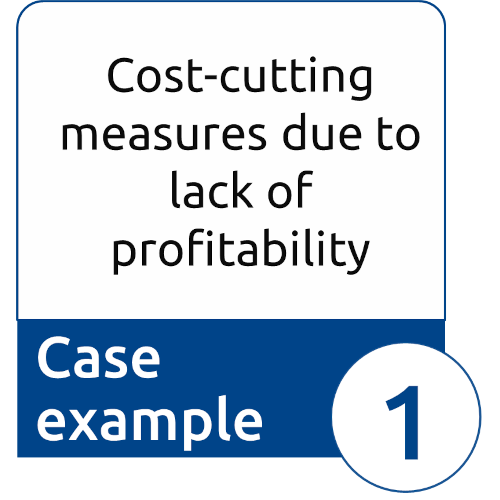Case study 1: Hidden cause of the deadlock
The problem:
The company was earning poorly when compared to the past, although the competitive situation had remained largely the same.
What has happened:
Cost-cutting measures, especially in personnel, were initiated and sales activities intensified.
The results of the diagnosis:
Over the years, the company had become strategically bogged down and an expansion strategy was initiated a few years ago to develop new target groups. This gave the company many of the “wrong” customers. However, as the positioning was the joint responsibility of all managing directors, the mistakes could not be corrected due to each of their personal interests, and consequently, the positioning remained an unsuitable solution.
What solution was implemented:
The required roles in management and the associated skills and capabilities were jointly developed and matched with the existing competencies and preferences of the managing directors. The results were confirmed by obtaining anonymous supervisor feedback and the responsibilities of the management team were redefined.
Instead of using generic cost allocation factors, the acquisition and order processing costs were allocated to key customers according to their actual return on investment: overall, how much time did we effectively spend on this order?
Based on the P&L analyses of the selected “wrong” key accounts, the best return on investments were identified and new rules were mutually agreed upon and implemented to attract these customer bases while maintaining a profit.


